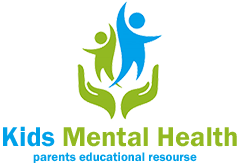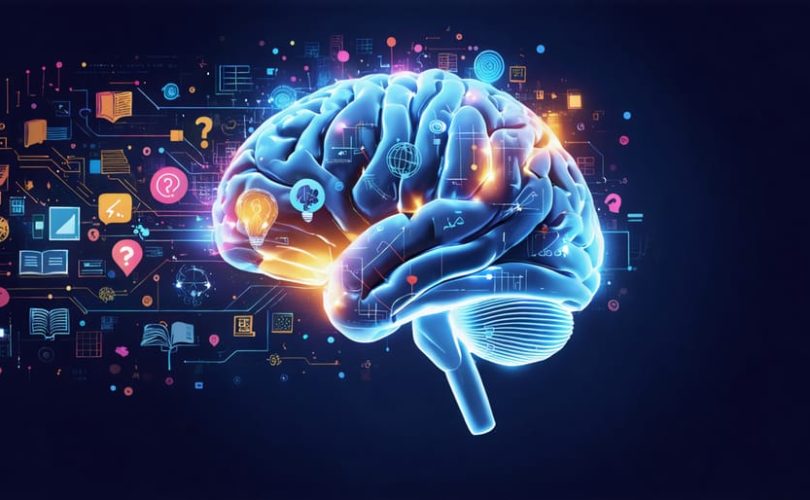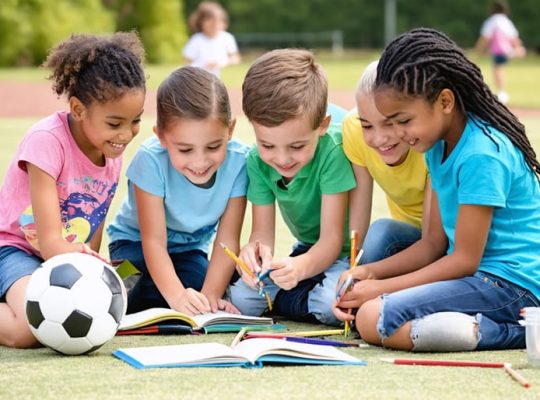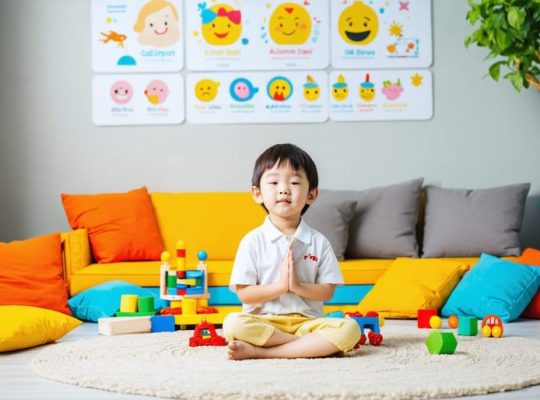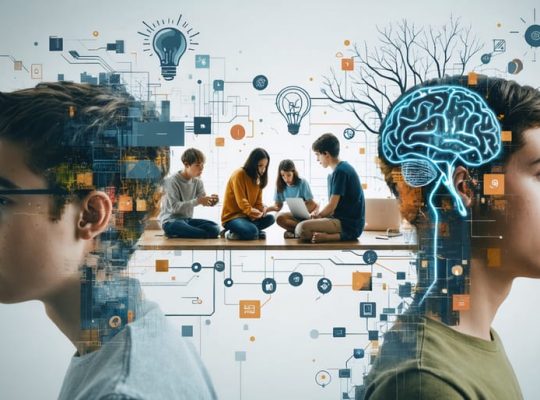During adolescence, the brain undergoes remarkable transformations that shape how teenagers think, feel, and interact with the world around them. From enhanced abstract reasoning to sophisticated decision-making abilities, cognitive development between ages 12-18 represents a crucial period of intellectual growth and emotional maturity.
Parents and educators witness these changes firsthand as teens begin tackling complex mathematical concepts, engaging in philosophical debates, and developing their unique perspectives on social issues. These cognitive advances aren’t just academic – they fundamentally alter how adolescents process information, regulate emotions, and navigate relationships.
Understanding these developmental milestones helps adults provide better support during this transformative period. Whether it’s a teenager suddenly questioning family values, demonstrating improved problem-solving skills, or showing greater awareness of hypothetical scenarios, these changes reflect normal and healthy cognitive development.
This article explores real-world examples of cognitive development in adolescence, offering practical insights for parents, teachers, and healthcare professionals. By recognizing and nurturing these emerging cognitive abilities, we can better support teenagers as they develop into independent, thoughtful adults while addressing common challenges that arise during this critical phase of development.
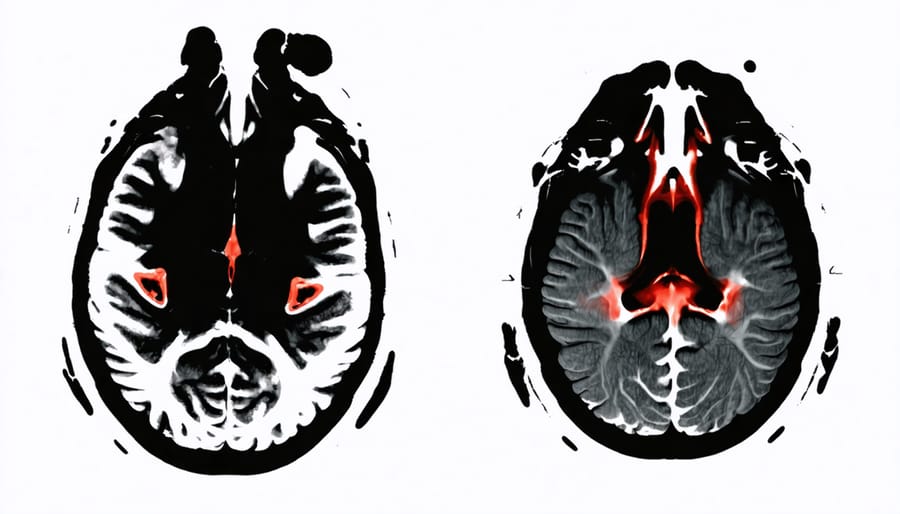
Key Changes in Adolescent Thinking
Abstract Reasoning Skills
During adolescence, teens develop remarkable abstract reasoning abilities that transform how they understand the world. Instead of seeing things in simple black and white terms, they begin to grasp complex concepts and hypothetical situations. For example, a teen might consider multiple solutions to a math problem or analyze the deeper themes in literature rather than just following the plot.
Dr. Sarah Chen, a developmental psychologist, explains: “I often see teens starting to question assumptions and think more philosophically. They might debate social justice issues or ponder existential questions about life’s meaning – things that require sophisticated mental processing.”
This newfound ability appears in everyday situations too. A 15-year-old might understand that their parent’s bad mood could be due to work stress rather than anything personal. They can also think through “what-if” scenarios when making decisions about their future, like considering how different college choices might affect their career paths.
Parents often notice their teens engaging in more complex discussions, using analogies, and detecting subtle meanings in conversations. These are all positive signs of healthy cognitive growth that should be encouraged through thoughtful dialogue and engaging activities.
Decision-Making Abilities
During adolescence, teenagers begin developing more sophisticated decision-making abilities through real-world experiences. For instance, a 15-year-old might weigh the pros and cons of joining an after-school activity versus maintaining a part-time job, considering factors like time management, financial benefits, and social opportunities.
Consider Sarah, a high school junior, who demonstrated growing decision-making skills when she chose to delay attending a friend’s party to complete an important project. This shows how teens start considering long-term consequences over immediate gratification.
Adolescents also begin showing improved judgment in daily scenarios. They might consider multiple perspectives when resolving conflicts with siblings or friends, rather than reacting impulsively. For example, a teenager might recognize that their younger sibling’s annoying behavior stems from wanting attention, leading to a more measured response.
However, it’s important to note that this development happens gradually. While a 16-year-old might make thoughtful decisions about academic goals, they might still need guidance with more complex choices like college selection or career planning. Parents can support this development by allowing teens to make age-appropriate decisions while providing a safety net for learning from mistakes.
Social Understanding and Self-Awareness
Perspective Taking
During adolescence, teenagers develop a remarkable ability to see the world through others’ eyes, which is crucial for their social skills development. For instance, a 14-year-old might recognize that their parent’s stress about a work deadline affects their mood at home, showing a deeper understanding of complex emotional situations.
This newfound perspective-taking ability shows up in various ways. Teens begin considering multiple viewpoints during family discussions, showing more empathy toward siblings’ struggles, and understanding why teachers or coaches make certain decisions. A teenager might defend a friend’s actions to their parents by explaining the friend’s challenging home situation, demonstrating both emotional awareness and complex reasoning.
Consider Sarah, a 15-year-old who noticed her younger brother struggling with math homework. Instead of teasing him like she might have done in earlier years, she recalled her own difficulties with the subject and offered encouragement, showing how perspective-taking enhances family relationships.
This cognitive development also helps teens navigate social situations more effectively. They become better at predicting how their words might affect others, understanding subtle social cues, and adapting their behavior accordingly. This growth in perspective-taking abilities forms the foundation for meaningful relationships and emotional maturity in adulthood.

Identity Formation
During adolescence, teenagers engage in profound self-discovery as they work through teen identity formation. You might notice your teenager trying out different clothing styles, music preferences, or friend groups – these are all normal examples of identity exploration. Many teens start questioning their beliefs, values, and goals, often leading to deeper conversations about their future aspirations and place in the world.
Take Sarah, a 15-year-old who began volunteering at an animal shelter. Through this experience, she discovered her passion for animal welfare, which helped shape her career aspirations and personal values. This kind of self-reflection and identity development happens naturally as teens encounter new experiences and responsibilities.
Common examples of identity formation include:
– Exploring different hobbies and interests
– Developing personal style and self-expression
– Questioning family values and forming individual beliefs
– Testing boundaries and making independent decisions
– Building close friendships and defining social roles
– Discovering talents and setting future goals
Parents and educators can support this process by providing opportunities for healthy exploration while maintaining open, judgment-free communication. Remember that identity formation isn’t always linear – teens might try on different personas before finding what truly resonates with them. This journey of self-discovery, though sometimes challenging, is essential for developing a strong sense of self.
Emotional Processing Changes
Understanding Complex Emotions
During adolescence, teenagers develop a more nuanced understanding of emotions, moving beyond simple “happy” or “sad” feelings to recognize complex emotional states. For example, a teen might simultaneously feel excited about making the soccer team while experiencing anxiety about meeting new teammates’ expectations. This emotional complexity is a natural part of growing up as adolescents learn to master their big emotions and understand conflicting feelings.
Sarah, a 15-year-old student, shares how she felt both proud and disappointed after receiving a B+ on a challenging project: “I knew I worked really hard, but part of me wanted that A. It took me time to realize both feelings were valid.” This kind of emotional awareness develops gradually as teens process their experiences and learn to identify subtle differences in their emotional responses.
Parents often notice their teenagers showing increased empathy and emotional depth, like understanding that a friend can be both frustrated and grateful about family responsibilities. This development helps teens navigate social relationships and build stronger emotional intelligence for future challenges.
Coping Strategies
During adolescence, teens develop various strategies to manage their emotions and stress. A common example is when teenagers learn to take deep breaths and count to ten before responding to frustrating situations. Many adolescents also discover the benefits of journaling, using it to process complex feelings and identify emotional patterns.
Physical activities become important coping tools, with many teens finding that exercise, sports, or even simple walks help clear their minds. Creative outlets like art, music, or dance often emerge as powerful emotional release valves. For instance, a teen might channel their anxiety into playing guitar or expressing feelings through painting.
Social support networks also expand during this time. Teenagers learn to reach out to friends, trusted adults, or counselors when dealing with difficulties. They begin recognizing when they need help and develop the confidence to ask for it. Some might create study groups to manage academic stress or join clubs where they can share common interests and concerns with peers.
These developing coping mechanisms help build resilience and emotional intelligence, crucial skills that will serve them throughout their lives.
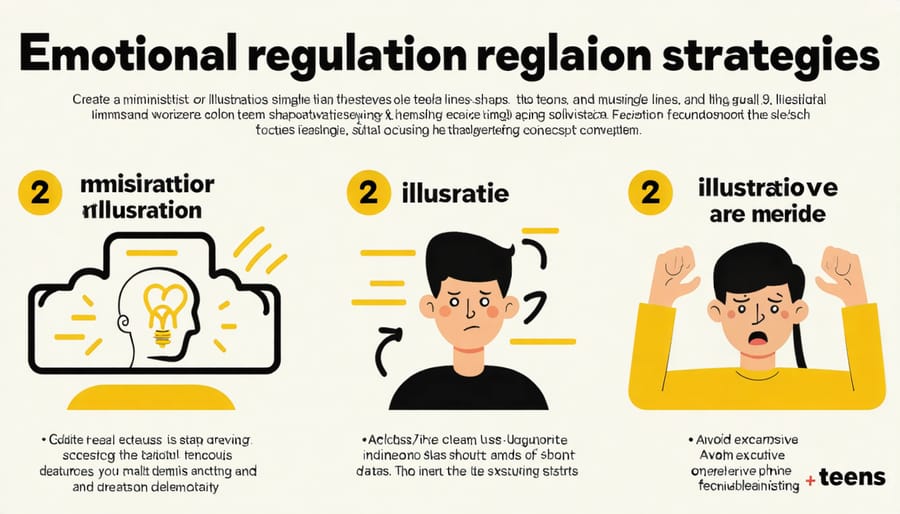
Supporting Healthy Development
Communication Approaches
Communicating effectively with adolescents requires a flexible approach that acknowledges their growing independence while maintaining supportive guidance. One effective strategy is to practice active listening without judgment, allowing teens to express their thoughts freely. This helps strengthen emotional attachment patterns and builds trust.
Try using open-ended questions that encourage deeper thinking, such as “What made you come to that conclusion?” rather than simple yes-or-no queries. This approach supports their developing abstract reasoning skills and shows respect for their cognitive growth.
Timing is crucial – many teens are more receptive to conversations when they feel relaxed and aren’t being pressured. Car rides, walks, or casual activities often provide natural opportunities for meaningful dialogue. Remember to validate their emotions while gently challenging their reasoning when necessary.
Digital communication can also be valuable when used thoughtfully. Text messages for quick check-ins or sharing relevant articles can keep communication channels open without feeling intrusive. However, important conversations should still happen face-to-face whenever possible.
Most importantly, maintain patience and consistency in your communication approach. Adolescents may test boundaries, but knowing they have a reliable adult to turn to supports healthy cognitive development and emotional security.
Creating Growth Opportunities
Parents and educators can actively create opportunities that enhance adolescent cognitive development through engaging activities and supportive environments. One effective approach is encouraging teens to participate in debate clubs or discussion groups, which strengthen critical thinking and logical reasoning skills while building confidence in expressing complex ideas.
Project-based learning activities, such as science fairs or community service initiatives, allow adolescents to develop planning, organization, and problem-solving abilities. These hands-on experiences help teens connect abstract concepts to real-world applications, deepating their understanding and retention of information.
Strategic games and puzzles, from chess to complex video games that require strategic thinking, can enhance cognitive flexibility and decision-making skills. Similarly, creative pursuits like creative writing, music, or art challenge teens to think abstractly and express themselves in innovative ways.
Involving adolescents in household financial planning or budgeting teaches practical mathematical skills while developing their ability to think ahead and understand consequences. Group study sessions or peer tutoring opportunities can enhance both learning and social cognitive development, as teens learn to explain concepts to others and see different perspectives.
Remember to maintain a balance between structured activities and free time for independent exploration and reflection. This combination allows teens to process new information, develop their own interests, and practice self-directed learning – all crucial aspects of cognitive development during adolescence.
As we’ve explored throughout this article, adolescent cognitive development is a fascinating and complex journey that shapes the future of our young people. The teenage brain undergoes remarkable changes, from enhanced abstract thinking and decision-making abilities to improved emotional processing and social awareness. These developments don’t happen in isolation – they require support, understanding, and guidance from caring adults.
Remember that every teenager develops at their own pace, and what we’ve discussed are general patterns rather than strict timelines. The key is to remain patient, supportive, and attentive to your adolescent’s unique developmental journey. Create opportunities for them to exercise their growing cognitive abilities through meaningful discussions, problem-solving activities, and independent decision-making.
As parents, educators, and caregivers, we play crucial roles in nurturing this development. Provide safe spaces for teenagers to explore their thoughts, challenge their assumptions, and learn from their experiences. Encourage critical thinking while offering guidance when needed. Stay connected with their teachers, counselors, and healthcare providers to ensure a comprehensive support system.
Most importantly, maintain open communication and show genuine interest in their intellectual growth. Celebrate their achievements, support them through challenges, and remind them that this period of intense development is preparing them for a successful future. With proper support and understanding, adolescents can harness their expanding cognitive abilities to become thoughtful, capable, and confident adults.
